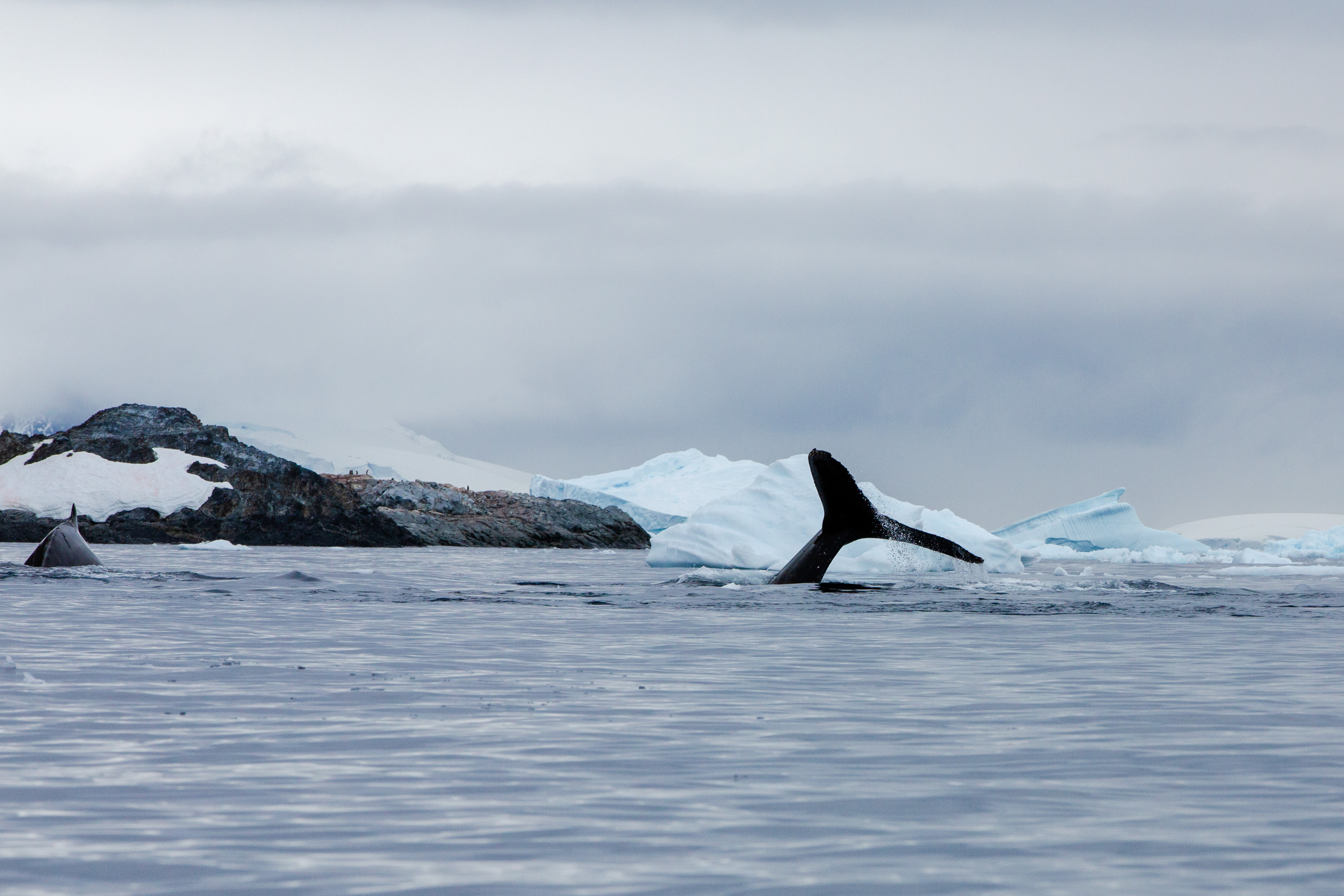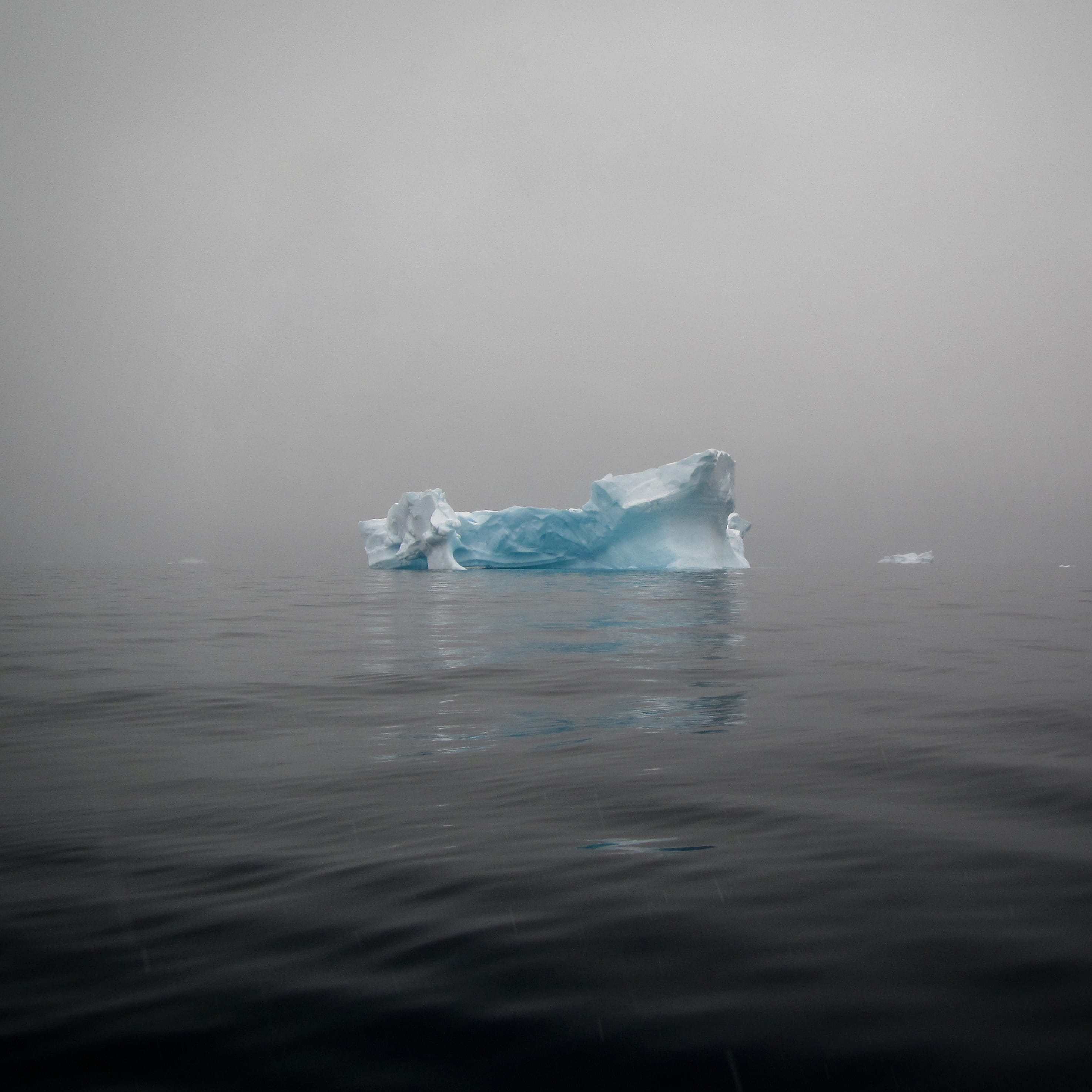We caught up with Ihlara McIndoe, NZSO NYO Composer in Residence 2021, to talk about her new work Ephemeral Bounds, which will be performed by the NZSO National Youth Orchestra, conducted by Gemma New, in Auckland (July 4) and Wellington (July 11).
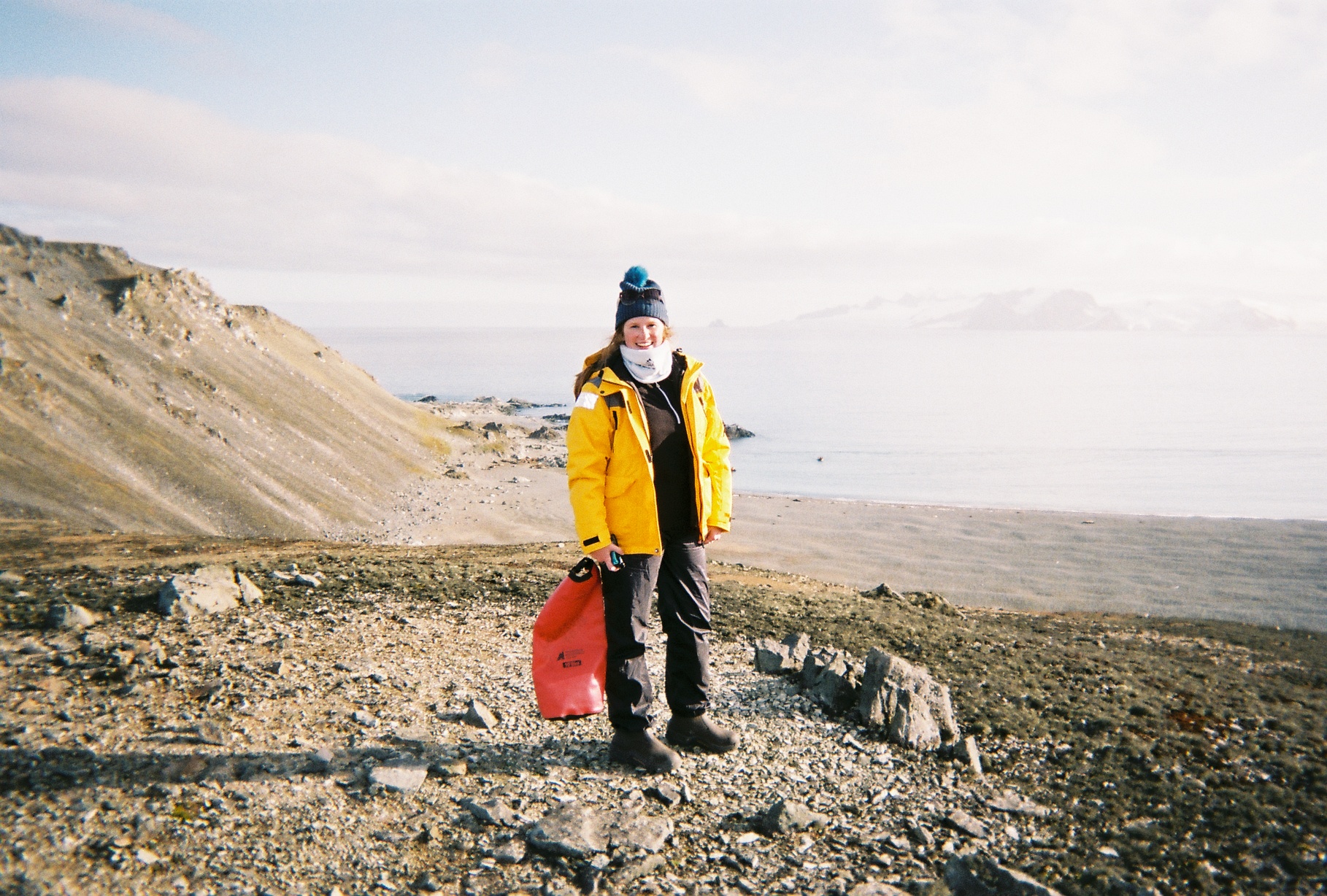
Congratulations on being appointed the 2021 NZSO National Youth Orchestra Composer-in-Residence. How do you feel about being chosen for this residency?
I am really fortunate to have been offered this opportunity, and am looking forward to meeting Gemma and the orchestra this week! I think the experience of writing for the youth orchestra is particularly exciting because it is an opportunity to really try something a little different and fun, with a group of players who are super enthusiastic and supportive. I feel so lucky to have this chance to work with a group of my peers who are keen to commit to the concept, share their ideas, and have a good time making music together.
What are you particularly looking forward to during your time with the NYO?
Ephemeral Bounds draws from ecological ideas of interconnectedness and communication, alongside the idea which I think a lot of composers have in mind when working - how we can explore new ways of hearing and experiencing orchestral music, and what this experience means to us on a social and cultural level. My piece requires the orchestra to operate in non traditional ways, and to communicate over quite large distances. There are passages where communication and a degree of improvisation are key, and what I’m most looking forward to is hearing how the players put their own take on these sections, how they communicate with one another and the audience, and how their own creative contributions shape and grow the piece.
The other thing I was particularly looking forward to as part of this opportunity was receiving mentorship from Salina Fisher and working with conductor Gemma New. I’ve learnt so much from my time with Salina and am really grateful to her for sharing her insights, and am looking forward to spending time with Gemma and the orchestra this week.
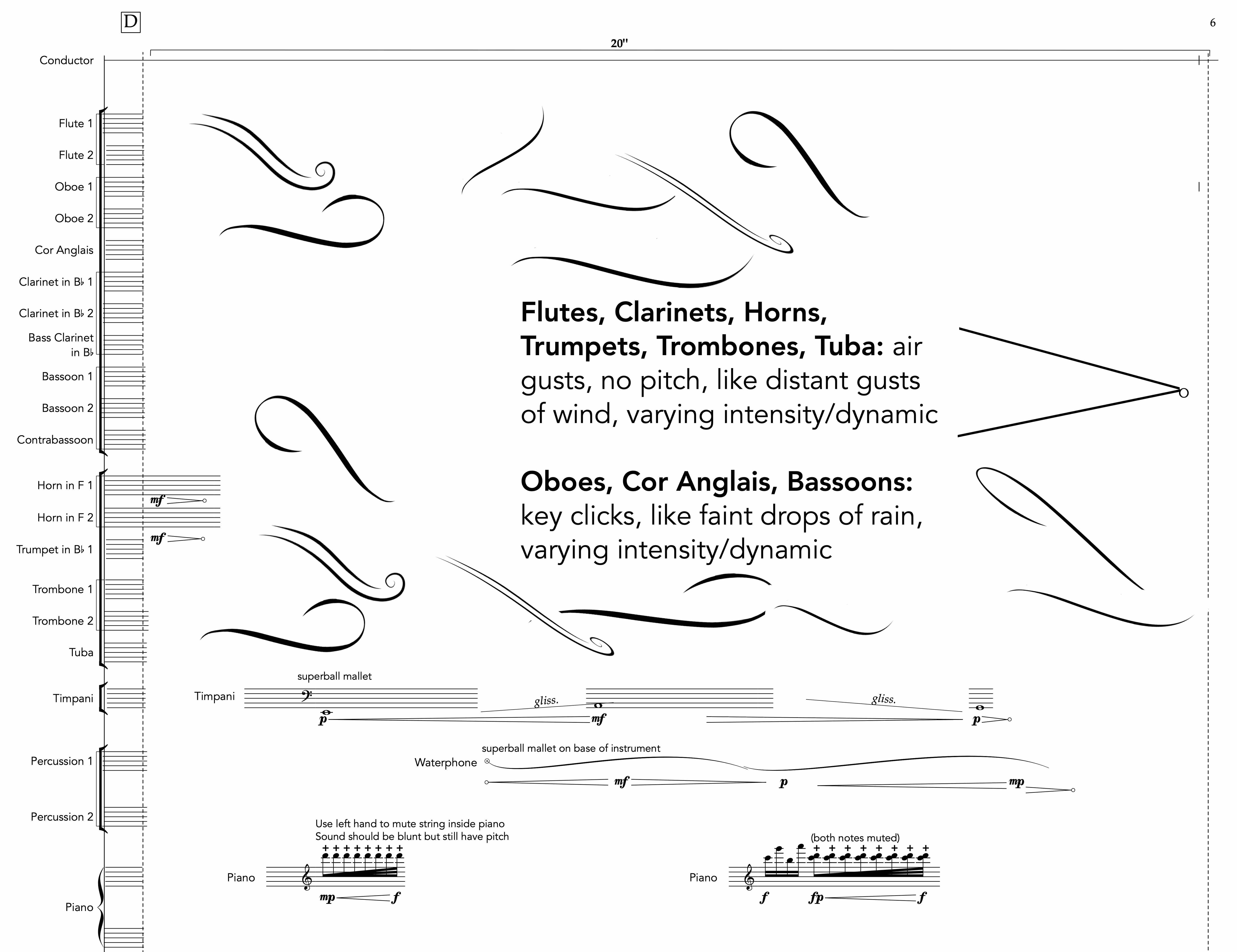
McIndoe: Ephemeral Bounds, wind, brass and percussion at letter D.
Limitations are temporary. Bursts of momentum, fleeting.
We swing on a pendulum: exploring, preserving ... exploiting, polluting.
I am floating on black waters, surrounded by sleeping giants.
Snowflakes in my eyelashes, I watch the stars appear.
The silence is deafening.
Tell us about Ephemeral Bounds.
The inspiration for Ephemeral Bounds comes from an array of conversations with my peers while in Antarctica, and my personal reflections while in quarantine returning from our life changing adventure. We spent a lot of time thinking about themes of isolation and interconnectedness from an environmental and ecological perspective. We also commented how we felt so small and insignificant floating off the Antarctic Peninsula but also know that human actions have such an enormous impact on the polar regions. We spent a lot of time wondering how we could share such an incredible experience with others back home, when we didn’t know how to put into words the magnitude of effects the experience had on us. So a lot of these thoughts and feelings went into the initial planning of the piece. My experience with the Antarctic Heritage Trust also introduced me to the concepts of exploration and preservation (from an environmental and Antarctic history perspective) as inspirations for composition. Over the course of the past year, as I have been using these concepts within my compositions, I have started thinking about them more in the context of classical music as an industry, and the cultural and social significance of the orchestra. Flowing from this thinking, I aim for this composition to be an immersive experience which both reassures and challenges the audience in their ideas of what it means to go to an orchestra concert, and what it means to experience sound - while hopefully managing to portray a degree of the aural and emotional experience of my time in Antarctica.
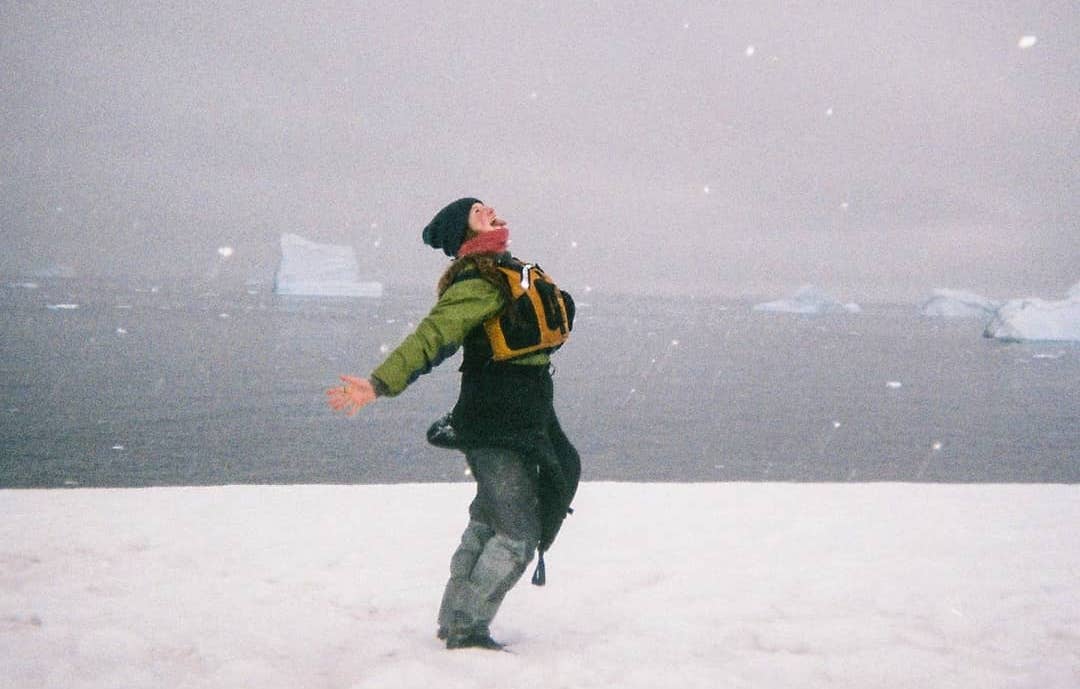
You travelled to Antarctica as part of the Antarctic Heritage Trust Inspiring Explorers Program. Can you tell us about this experience?
An absolutely phenomenal experience! I went to the Antarctic Peninsula with a group of 13 New Zealanders, including six other ‘Inspiring Explorers’, as part of a program run by the AHT to encourage the spirit of exploration. Each of us has a different area of passion, which we use to share our experience with communities back home. Our week in Antarctica was incredible - we spent most of our time exploring the Peninsula from the water on kayaks, alongside a couple of ventures on land each day. The wild life was amazing: gentoo and chinstrap penguins; elephant, Weddell, fur, and leopard seals; and minke and humpback whales were seen on the daily. The scale of icebergs and glaciers was completely beyond what I imagined, and was super interesting from a sonic perspective too - ice bergs are actually quite loud! The expedition was a fantastic experience…and we even went for a swim!
How has your trip to Antarctica affected your creative work? What are some of your other pieces that were inspired by the trip?
As I mentioned, I’ve been approaching composition with themes of exploration and preservation in mind over the last year since the expedition, and have worked on a collection of broadly Antarctic themed works. I’ve written a work called ‘On Satin Waters’ for violin, viola, and tape, which uses audio I took while in Antarctica. This has been performed by Mark Menzies and Nathaniel Otley in Dunedin, Christchurch and Nelson. This work is an elaborated version of some solo violin sketches I composed while quarantined on the boat once we returned to Argentina (we returned from Antarctica to find the rest of the world in the midst of a pandemic…). Those sketches, titled ‘Ushuaia Sketches’ after the town we were in port at, have been performed by Mark in Auckland, and Nathaniel in Christchurch and Dunedin. I also wrote a flute piece, ‘Wavering Horizons’, also drawing from my time in Antarctica, which was performed by Jennifer Timmins in Melbourne. I am also working on a piece for orchestra and tape, to be performed by the Dunedin Youth Orchestra later this year.
Ephemeral Bounds is quite an immersive work. How have you incorporated lighting (or lack of it) and spatialisation in the piece. Why did you do this?
Yes, the piece is performed in the dark, with players stationed around the hall, using stand lights. The reasoning for this is multifaceted. In one sense, it is in reflection of a particularly memorable evening kayaking. I remember we were out quite late, and sky and water were a deep blue, almost reaching black night, but we could still see the shadows of glaciers. The stars were starting to appear, and everything was sort of overwhelmingly eery as we floated in our kayaks on the beautifully still ocean - far enough away from each other to be alone, but still knowing we were there together. It was a really striking moment for me. So from a visual and spatial perspective, this moment was a big influence for those creative choices. I also wanted to place the orchestra around the audience to capture a sense of the sonic experience I had while in Antarctica. It was fascinating to listen to the calving of an iceberg echoing around a harbour, or the crunch of the group paddling through brash ice, or the roar of part of a glacier breaking, or the fizzing of an iceberg and how it changes in proximity and direction and intensity as we kayak past. On our first couple of days of kayaking I would find myself feeling slightly agitated trying to work out where the sounds were coming from - it was almost dizzying not being able to pinpoint. But after a few days, I found I was able to immerse myself in the sound world more, and embrace the uncertain swirling of noise. I hope the the use of spatialisation in Ephemeral Bounds can capture some of this - it may be quite uneasy at times, but hopefully can also be experienced as an immersive experience with sound.
Has the combination of your piece with Shostakovich Symphony No. 7 influenced your work in any way?
No, not really - aside from a couple of extra instruments being made available by virtue of them being needed for the Shostakovich!
